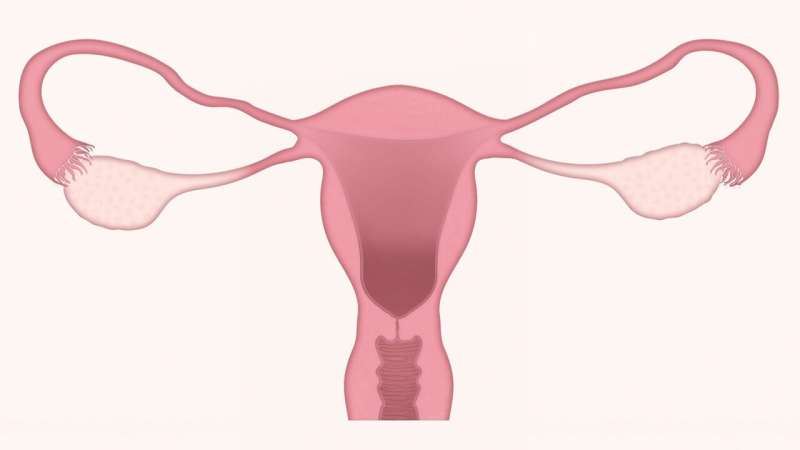This article has been reviewed according to Science X's editorial process and policies. Editors have highlighted the following attributes while ensuring the content's credibility:
fact-checked
trusted source
proofread
Study shows fallopian tubes can be safely removed during sterilization surgery

Women whose fallopian tubes are removed during sterilization via laparoscopy have only marginally more surgical complications than those whose tubes are simply cut, a study shows. The removal, salpingectomy, is a safe procedure that can help protect against future ovarian cancer.
Ovarian cancer is a relatively rare yet serious disease with an insidious progression, lacking early symptoms. Late detection means that the prognosis is often poor. According to WHO, about 440,000 women in the world are diagnosed each year.
In more than half of cases, the cancer appears to start in the fallopian tubes before spreading to the ovaries. Women who undergo sterilization can already be offered salpingectomy. The procedure is known as opportunistic salpingectomy and is established practice in gynecological surgery for pathological changes.
Until now, however, it has not been known whether the procedure entails more surgical complications, which may lead to many women opting out. The current study, published in The Lancet Regional Health—Europe, looked specifically at surgical complications.
Little difference between the groups
Almost 1,000 women who were due to be sterilized via laparoscopy took part in the study and were randomly assigned to receive either standard sterilization in which the fallopian tubes are cut (499 women) or extended surgery with salpingectomy (473 women).
Complications of tubal surgery can include bleeding during surgery, prolonged pain, urinary tract infections, wound infections, and hernias.
Among those participants whose fallopian tubes were removed, 8.1% experienced a complication within eight weeks of the procedure, compared to 6.2% of those participants whose tubes were cut. In this context, this is classified as an accepted difference without clinical significance.
The time taken for the procedure differed somewhat. The average time was 45 minutes when the fallopian tubes were removed, compared to 29 minutes when they were cut.
Benefits for society and individuals
The study was carried out by researchers at the University of Gothenburg and Umeå University, in cooperation with the Swedish National Quality Register of Gynecological Surgery (GynOp). The study thereby has a broad base with participants from the majority of Sweden's operating gynecological clinics.
The lead author is Annika Strandell, Associate Professor at Sahlgrenska Academy at the University of Gothenburg and Consultant Gynecologist at Sahlgrenska University Hospital.
"Every case of ovarian cancer we can avoid is a big win for society and for those women who would otherwise have been affected," she says. "Surgery to remove fallopian tubes during sterilization could provide an opportunity to prevent many new cases of cancer."
The researchers are also studying hormonal effects in women whose fallopian tubes have been removed during sterilization, including whether menopause occurs earlier with a risk of undesired health effects. This aspect of their research requires a longer follow-up period, and the first results are expected within a few years.
More information: Annika Strandell et al, Salpingectomy versus tubal occlusion in laparoscopic sterilisation (SALSTER): a national register-based randomised non-inferiority trial, The Lancet Regional Health - Europe (2024). DOI: 10.1016/j.lanepe.2024.101026


















